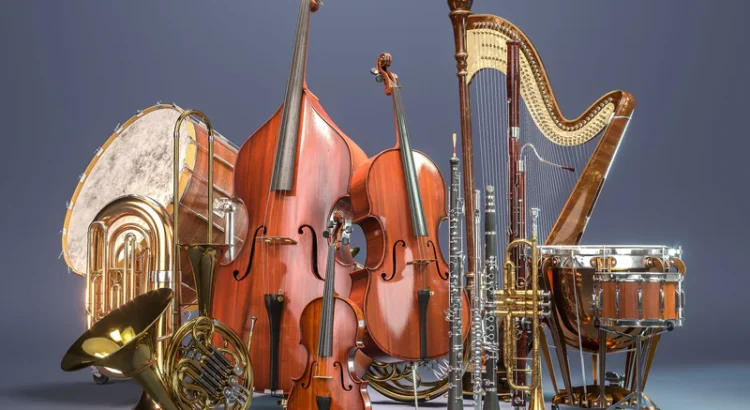El Valle Grita – Musical instruments have shaped human culture in ways that go beyond melody and rhythm. They have carried the voices of generations, preserved traditions, and pushed the boundaries of artistic expression. Each iconic instrument has a distinct story, from the precise craftsmanship of a Stradivarius violin to the raw energy of an electric guitar that fueled rock revolutions. Many of these instruments emerged from specific cultural or technological contexts, and over time, they became symbols of entire genres or even national identity. Their stories are not just about sound, but also about the musicians who brought them to life and the audiences who embraced them. By learning about these remarkable creations, we gain insight into the evolution of music itself and the social history it reflects. These instruments are more than tools—they are living legacies that connect the past with the present, inspiring musicians and listeners alike.
“Read More: ChatGPT Latest Innovation Can Now Replace Gemini on Android as a Digital Assistant”
The Stradivarius Violin and Its Legendary Craftsmanship
The Stradivarius violin, created by Antonio Stradivari during the 17th and 18th centuries, remains the pinnacle of violin-making excellence. Each instrument was crafted using carefully selected spruce for the top and maple for the back, sides, and neck. Stradivari’s unique varnish recipe, still debated among experts, contributed to the instrument’s extraordinary resonance and clarity. Musicians describe its tone as both warm and bright, capable of projecting in large concert halls while retaining intimate expressiveness. Only around 650 Stradivarius instruments survive today, and they are treasured by top violinists and collectors worldwide. Famous performers like Itzhak Perlman and Joshua Bell have played these masterpieces, showcasing their unmatched beauty. Concerts featuring a Stradivarius often draw larger audiences simply because of the instrument’s reputation. Beyond their musical qualities, these violins are considered works of art, representing the peak of human craftsmanship in stringed instruments.
The Fender Stratocaster and the Birth of Rock Sound
The Fender Stratocaster, introduced in 1954, redefined what an electric guitar could do. Its sleek, contoured body provided comfort for extended playing sessions, while its three single-coil pickups offered a range of tones from sharp and cutting to smooth and mellow. The synchronized tremolo bridge allowed players to bend notes dramatically, adding new expressive possibilities. Guitar legends like Jimi Hendrix, Eric Clapton, and Buddy Holly brought the Stratocaster into the global spotlight, cementing its role in rock, blues, and even funk. Its versatility made it equally suited for aggressive riffs and delicate melodies. The Strat’s design has changed little over the decades, a testament to its enduring appeal. Its sound can be heard on countless classic albums, and it remains a best-seller for Fender. Collectors seek out vintage models, while modern players continue to customize them to fit their style. This instrument is both a musical tool and a cultural icon.
“Read About: The Future of Music Festivals: Holograms, AI, and Live Bands Combined”
The Steinway Grand Piano and Timeless Elegance
Since its founding in 1853, Steinway & Sons has become synonymous with the finest pianos in the world. Each Steinway grand piano requires nearly a year to build, with skilled artisans shaping, tuning, and refining every detail. The company’s patented designs, such as the diaphragmatic soundboard, allow for unmatched tonal richness and dynamic range. Steinways have been the preferred choice of concert pianists, conservatories, and major recording studios for over a century. Artists like Vladimir Horowitz and Lang Lang have praised the instrument’s responsiveness, which allows them to express the subtlest musical nuances. The visual elegance of a Steinway—often featuring glossy black lacquer and graceful curves—adds to its prestige. Owning one is considered a milestone for serious pianists. Even in an era of digital keyboards, the Steinway grand remains a gold standard for acoustic excellence, embodying the blend of tradition, innovation, and artistry in piano making.
The Gibson Les Paul and Its Enduring Power
The Gibson Les Paul electric guitar, introduced in 1952, quickly became a staple of rock and blues music. Known for its solid mahogany body and carved maple top, the Les Paul produces a rich, sustaining tone that has defined countless recordings. Legendary guitarists like Jimmy Page, Slash, and Joe Perry relied on its sound to create some of the most iconic riffs in music history. The dual humbucking pickups, introduced in the late 1950s, gave it a thicker, warmer tone while reducing unwanted noise. Its combination of elegance and power has kept it popular among both classic rock veterans and new generations of players. While the design has seen various modifications, the essential character of the Les Paul remains unchanged. Whether on stage at a stadium concert or in a small recording studio, this guitar delivers a commanding presence that continues to inspire musicians across genres.
The Sitar and Its Mystical Indian Heritage
The sitar is one of the most recognizable instruments in Indian classical music, with a history dating back hundreds of years. Its long neck, gourd resonator, and sympathetic strings create a rich, layered sound that seems to shimmer in the air. Masters like Ravi Shankar introduced the sitar to Western audiences in the 1960s, influencing artists such as The Beatles and The Rolling Stones. The instrument requires years of disciplined practice to master, as players must learn intricate ragas and microtonal nuances. The sitar is more than just an instrument—it is a spiritual medium for many musicians, used to evoke specific emotions or states of mind. Its association with meditation and cultural heritage has helped it maintain a revered place in Indian music. In modern times, the sitar continues to appear in fusion projects, bridging traditional and contemporary sounds.
The Drum Kit and the Evolution of Rhythm
The modern drum kit evolved in the early 20th century, allowing one player to perform multiple percussion parts simultaneously. Combining bass drum, snare, toms, cymbals, and hi-hats, it became the heartbeat of jazz, rock, and pop music. Drummers like Gene Krupa and Ringo Starr popularized the kit, making rhythm a central focus of modern bands. Innovations such as double bass pedals and electronic drum pads have expanded its possibilities. The drum kit’s versatility enables it to adapt to almost any genre, from the intricate patterns of progressive rock to the tight grooves of hip-hop. Live performances rely heavily on the drummer’s energy to drive the band forward, and studio recordings often depend on the precision of drum tracks to anchor the mix. Beyond entertainment, drumming has even been studied for its therapeutic benefits, promoting coordination and relieving stress.
The Saxophone and Its Jazz Revolution
Invented in the 1840s by Adolphe Sax, the saxophone brought a new voice to wind instruments, blending the projection of brass with the flexibility of woodwinds. Its expressive tone quickly made it a favorite in jazz, blues, and later pop music. Artists like Charlie Parker, John Coltrane, and Stan Getz used the saxophone to push musical boundaries, crafting solos that remain legendary today. The instrument’s wide dynamic range allows it to shift from smooth, velvety tones to powerful, brassy bursts. Its adaptability also makes it valuable in marching bands, orchestras, and solo performances. Modern saxophonists continue to explore new styles, from experimental jazz to electronic music collaborations. The saxophone’s lasting appeal lies in its ability to connect deeply with listeners, evoking both joy and melancholy with equal intensity.
The Harp and Its Ancient Origins
The harp is one of humanity’s oldest instruments, with depictions found in ancient Egyptian tombs and Mesopotamian carvings. Its distinctive triangular frame and plucked strings produce a gentle, ethereal sound that has been associated with both sacred ceremonies and courtly entertainment. The modern concert harp, with its pedal system for changing keys, allows for a wide range of harmonic possibilities. Harpists perform in symphony orchestras, chamber groups, and as soloists, often adding a magical quality to the music. The harp has also found a place in Celtic traditions, where smaller versions accompany folk songs and dances. Its timeless beauty and versatility keep it relevant in both classical and contemporary contexts. Whether used to soothe an audience or to create dramatic flourishes, the harp remains a symbol of elegance in music.
The Electric Bass and the Groove Foundation
The electric bass, popularized in the 1950s, transformed the rhythm section of modern music. By providing a strong, consistent low-end, it allowed drummers and guitarists greater freedom to explore complex patterns. Innovators like James Jamerson and Flea demonstrated the bass’s melodic and rhythmic potential, making it as expressive as any lead instrument. Its four-string design, often tuned like a double bass, made it accessible to many players, while extended-range versions expanded its possibilities. The bass is essential in nearly every genre, from funk and reggae to metal and jazz. Advances in amplification and effects have further broadened its sonic palette, enabling bassists to craft unique tones. In live settings, the bass locks in with the drums to create grooves that move audiences physically and emotionally.
The Bagpipes and Their Cultural Identity
Bagpipes, with their unmistakable drone and melodic chanter, are deeply tied to Scottish and Celtic traditions. Played at ceremonies, festivals, and military events, they evoke a sense of heritage and pride. The instrument’s origins trace back to ancient civilizations, with variations found across Europe, the Middle East, and North Africa. Mastering the bagpipes requires control of both breath and arm pressure to maintain a steady airflow. The sound, often described as haunting and powerful, has been used to inspire troops, honor the fallen, and celebrate communal gatherings. Modern musicians sometimes incorporate bagpipes into rock and folk fusion projects, expanding their audience beyond traditional contexts. Their role as a cultural symbol ensures their continued presence in both public rituals and contemporary music.



